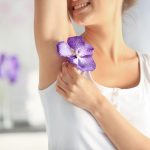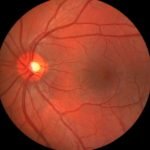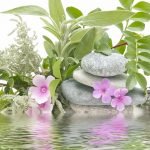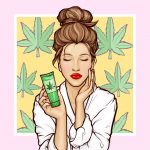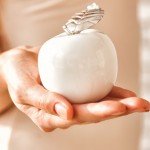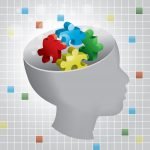The Hardening of Our Children: What the Nature Cure Physicians Said
Regard water as your medicine chest Kneipp often used to say to his followers and friends and there is no better advice for mothers
-Benedict Lust, 1900b, p. 103I do not know of anything more beneficial than walking in the snow, as this draws the blood to the feet.
-Father Sebastian Kneipp, 1904, p. 38
Have we deviated so much from our naturopathic principles that we forget what the early NDs had to teach us about raising our children healthy and strong and yield instead to the clamor of orthodox allopathic authority, when it comes to how to raise them? To protect the newborn child from harm and to propel him or her toward health and vitality are every parent’s wishes. The early NDs pioneered preventive medicine from day 1 in a neonate’s life; they knew how to ensure healthy children. They knew there were no shortcuts. They knew that nature was the answer and the path: “The agents used in Kneipp’s healing methods are air, light, sunshine, and diet as well as water” (Lust, 1904, p. 146). Their efficacy can be illustrated by the great successes documented in the establishments of Kneipp.
Considering the dangers to the health of children, Lust considered one of the most important questions in life to be “How must we harden our children?” (1924, p. 332). He elaborates: “Hardening is the same thing as creating force to resist morbid influences; it affords you protection against disease and epidemic by ridding the body of the germs of disease; it helps you to bear trouble, hardship, and suffering more lightly—for it is synonymous with health” (Lust, 1924, p. 332).
In Lust’s view, raising healthy children was synonymous with the practice of “hardening.” A contemporary equivalent word could be “toughening.” Lust voiced his opinion that stout children, for example, were not necessarily healthy children. It was his contention that children hardened from infancy did not have fat bodies and that cold-water applications gave these children healthy, strong, and elastic skin, which provided the best protection to the child (Lust, 1900a, p. 102). Today, American children suffer from a plethora of problems associated with their lifestyle, illustrated by record high incidences of childhood obesity, diabetes mellitus, allergies, asthma, and numerous chronic presentations. From Lust’s point of view, surely a dose of hardening would relieve these children from a life of disease and discomfort.
Clean fresh air and cold water were the prescriptions made to parents of young children by these early NDs. In Benedict Lust’s first English-language journal, The Kneipp Water Cure Monthly, he knew too well that “mothers will be afraid to put a baby into water of from 0 to 10 degrees Reaumur [32-77°F]” (1900a, p. 101), which was classified as cold water. Lust was aware that the perception of hardening was associated with “inuring oneself to cold,” when in fact hardening was protecting against morbid influences and developing the body’s power of immunity (1924, p. 331).
Lust advocated “rational hardening,” giving “children the best protection against the danger of chill and infection that are so much dreaded” (1924, p. 332). He explained, “Even the weakest children may be strengthened by this simple means, while thousands and thousands of strong children are weakened by the hot baths into which [they] are put daily, simply because custom and fashion have established this rule” (Lust, 1900a, p. 102). The best time to begin hardening, he felt, was before conception: “The mother must do away with all disturbing influences for the development of a sound, steady system of nerves of the embryo” (Lust, 1913, p. 397). He and other early NDs had a prescription that included “three simple baths of a few seconds duration in a week. These baths should be taken right after rising in the morning or at any convenient time during the day but never before not two hours have passed after a meal. It is also not advisable to take a bath right before going to bed for in some cases such a bath may prevent sleep” (Lust, 1900b, p. 103).
Hot or Cold?
Our love of hot showers and hot baths no longer resides in the domain of luxury but is a norm, an expectation, a basic amenity. Gone are the days of walking long distances or traveling for days to reach a neighboring village or town. So too, cold and drafty living quarters are much less common. Famine or acute food shortages are unlikely in developed countries, notwithstanding the parallel scourge of poor-quality processed foods and sugar consumption. We are blessed with cars, central heating, supermarkets, and a proliferation of modern conveniences, gadgets, and equipment. However, the early NDs who followed the Kneipp water cures noted the proliferation of such luxuries and warned about potential hazards to health. They were most particularly worried about pollution, poor-quality food, and the dangers of drugs, but they were also publicly averse to less apparently harmful practices, such as hot bathing, considering their excess use unnecessary and unhealthy: “Correct hardening of the body is the best sign of perfect health and also the best security against illness” (Lust, 1913, p. 397).
Their advice was that the duration of a cold bath should not be long: “The best means of hardening the system are, however, short, cold ablutions and baths of no longer than a minute’s duration” (Lust, 1905, p. 19). For children, the administering of cold baths consisted of observing the following rules: “Dip the child in rapidly, count one, two and three and take [the child] out at once. Do not use a towel to dry but wrap the child up in a dry piece of cloth and put the child to bed. Do not [heat] the cloth for such a [heated] cloth will under all circumstances paralyze the beneficial effect of the cold water” (Lust, 1900a, p. 101). He adds: “From the very day of its birth the baby should be put once or twice a day into cold water up to its throat and then put to bed without being dried. From its third year, when the child is already very active, three immersions a week are sufficient. The aversion to cold water is as a rule conquered after two or three applications” (Lust, 1908, p. 34).
Despite their concern about protracted use of hot bathing for adults and for children, the early NDs knew the value of such treatments as steam baths. Kneipp, for example, did not oppose all steam baths, for they had their place: “Properly applied they will relieve cold in the head and the chest or the limbs, but he put herbs in the water of the vapor baths to make them more effective” (Lust, 1904, p. 148). Kneipp counseled that, if warm tub baths were taken, “they should not last longer than five minutes, they must always be followed by a rapid, cold ablution, after which, if the body is not dried off, exercise must be taken, as after all cold showers, until the skin is quite warm again” (1903, p. 314). For the child who is given a warm bath, that child is dipped into cold water, or cold water is poured over the child while in the bathtub: “This cold water application will strengthen the body and counteract the effect of the warm water” (Lust, 1900a, p. 102).
How Cold Is Cold?
Hot was classified as temperatures in excess of 100°F or 38°C; the early NDs believed that water warmer than 77°F or 25°C was harmful for babies, while the ideal bathing water temperature was 55°F, or 13°C (Lust, 1900a, p. 101). These cold-water temperatures are almost impossible to achieve with urban plumbing within normal operating parameters. Thirteen degrees Celsius is the same temperature that European spas administer with the cold plunge that follows the hot sauna or warm mineral baths.
Kneipp advised that, to begin with cold-water treatments, one cardinal rule was “No one should venture to make any cold application, whatever, when feeling cold, shivering, etc” (1900, p. 157). Kneipp prescribed cold bathing to children in earnest to strengthen their bodies to resist the attacks of disease and to make them less sensitive to draughts and changes in temperature. Not drying oneself after bathing was emphasized by Kneipp and his followers. As already outlined, Kneipp recommended: “Children ought to be quickly washed every day all over the body, (in a room whose temperature is about 60°-66°F) with water of about 71°-80°F, not dried off, and put to bed for about 10 minutes or immediately dressed that they may run about and take some exercise; also, children may daily be dipped up to under their arms in cold water for two seconds” (1903, p. 313).
For adults hesitant to initiate hardening rituals, Lust urged that they “commence with lukewarm ablutions, gradually reducing the temperature till the water is cool” (1905, p. 19). Cool water ranged from 55 to 66°F, or 13 to 19°C.
Walking Barefoot
In addition to taking cold or at least much cooler baths, the early NDs highly recommend walking barefoot. They considered it to be an excellent means for hardening. Kneipp felt that “nothing else can be more recommended to young and old than walking barefooted in snow” for half a minute at a time (Kneipp, 1903, p. 322; Lust, 1900c, p. 152). Kneipp added that barefoot beginners should choose “only fresh fallen snow” (1904, p. 38). Lust cautioned that, before walking barefoot or on the snow or walking in water or on wet stones or wet grass, “care must be taken that the feet are thoroughly warm. If they are cold, they must be warmed by rubbing or a short warm foot bath” (1900c, p. 152).
The Benefits of Hardening
Cold-water applications were revered as the most effective way to “produce heat and increase vitality” (Lust, 1904, p. 148). The early NDs contended that children treated with cold water were not easily subject to colds, convulsive attacks, and other diseases of childhood, such as measles, scarlet fever, diphtheria, etc (Lust, 1900a, p. 102; Lust, 1908, p. 34).
A Kneipp Anecdote About Hardening
Lust recounted a case with a young mother and her efforts at hardening her baby: “A young mother came to Kneipp and told him that her three weeks old baby was always restless crying and had little appetite and very little sleep. Kneipp advised this mother to dip her child into cold water, wash it rapidly, wrap it up without drying and put it to bed. Several weeks later Kneipp met the young mother again and asked her how the baby was. She answered: ‘It is much quieter now, has more appetite, sleeps much better and is thriving well, it makes not the least fuss when put into the cold water’” (1900a, p. 102).
Dr Baumgarten of Bad Wörishofen, Germany, the site of Kneipp’s water cure establishments, had the following advice: “[C]hildren after the first week of their life, should be dipped for a moment in water of 82° to 73° after every bath” (Lust, 1900c, p. 153).
The wisdom of our early NDs in abiding by the laws of nature is all but lost today, as allopathic medicine threw the baby out with the bath water. We choose vaccinations instead of preventive care for our children. It is but a short hop, some contend, from vaccinating infants to protracted methylphenidate hydrochloride prescriptions for youngsters or diagnoses of attention-deficit/hyperactivity disorder and autism. Naturopathic medicine can meet its challenges to provide primary healthcare that is rational and effective, but we have to keep in mind that adopting mainstream allopathic drug protocols without considering the time-tested protocols of the early NDs means that we are abandoning our roots, much less loving them.
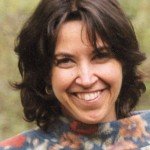 Sussanna Czeranko, ND, BBE is a faculty member working as the Rare Books Curator at National College of Natural Medicine, Portland, Oregon. She is currently compiling several collections based on the journals published early in the last century by Benedict Lust. In addition to her work in balneotherapy, she is founder of the Breathing Academy, a training institute for NDs to incorporate a scientific model of breathing therapy called Buteyko into their practice.
Sussanna Czeranko, ND, BBE is a faculty member working as the Rare Books Curator at National College of Natural Medicine, Portland, Oregon. She is currently compiling several collections based on the journals published early in the last century by Benedict Lust. In addition to her work in balneotherapy, she is founder of the Breathing Academy, a training institute for NDs to incorporate a scientific model of breathing therapy called Buteyko into their practice.
References
Kneipp, S. (1900). Water applications. The Kneipp Water Cure Monthly, 1(9), 156-157.
Kneipp, S. (1903). Means of hardening for children and adults. The Naturopath and Herald of Health, 4(11), 313-322.
Kneipp, S. (1904). Snow. The Naturopath and Herald of Health, 5(2), 37-39.
Lust, B. (1900a). How to take care of the new-born baby. The Kneipp Water Cure Monthly, 1(6), 101-102.
Lust, B. (1900b). Applications of water for mothers. The Kneipp Water Cure Monthly, 1(6), 103.
Lust, B. (1900c). Hardening. The Kneipp Water Cure Monthly, 1(9), 152-153.
Lust, B. (1904). Father Kneipp and his methods. The Naturopath and Herald of Health, 5(7), 145-149.
Lust, B. (1905). Hardening. The Naturopath and Herald of Health, 6(1), 19-21.
Lust, B. (1908). Hardening and strengthening of the body. The Naturopath and Herald of Health, 9(1), 34.
Lust, B. (1913). Hardening one’s self. The Naturopath and Herald of Health, 18(6), 397-399.
Lust, B. (1924). Hardening and enervation. Herald of Health and Naturopath, 29(4), 331-333.




